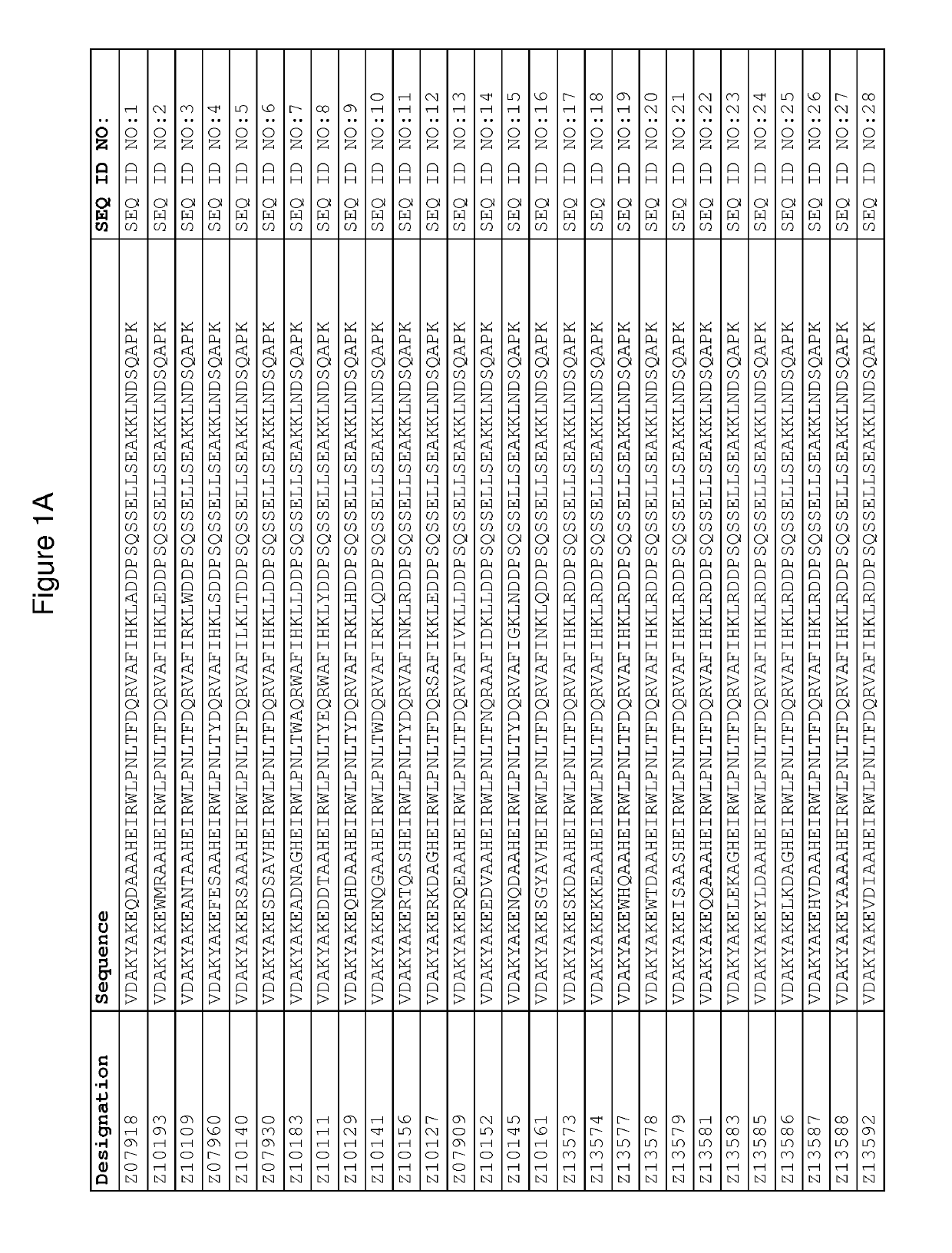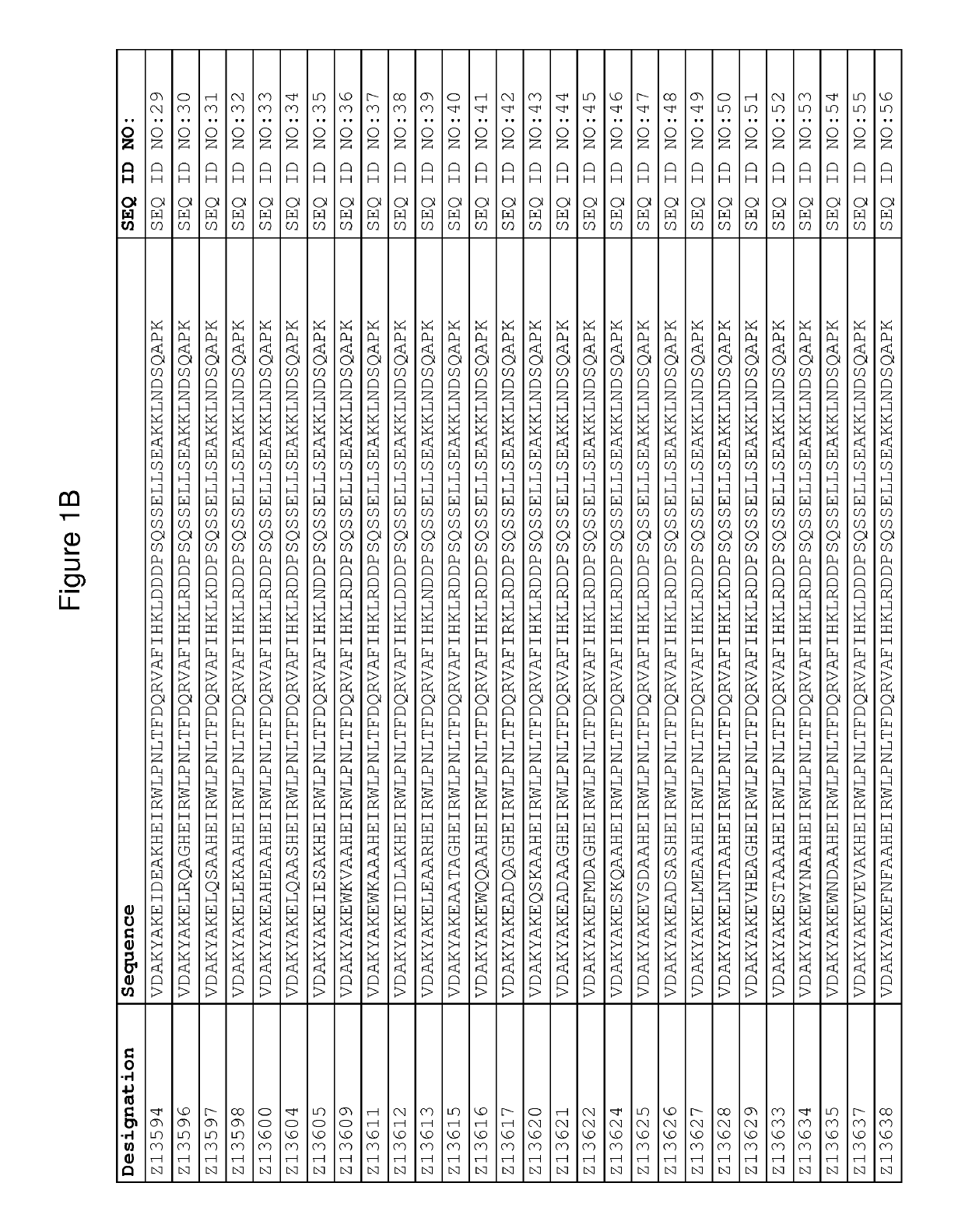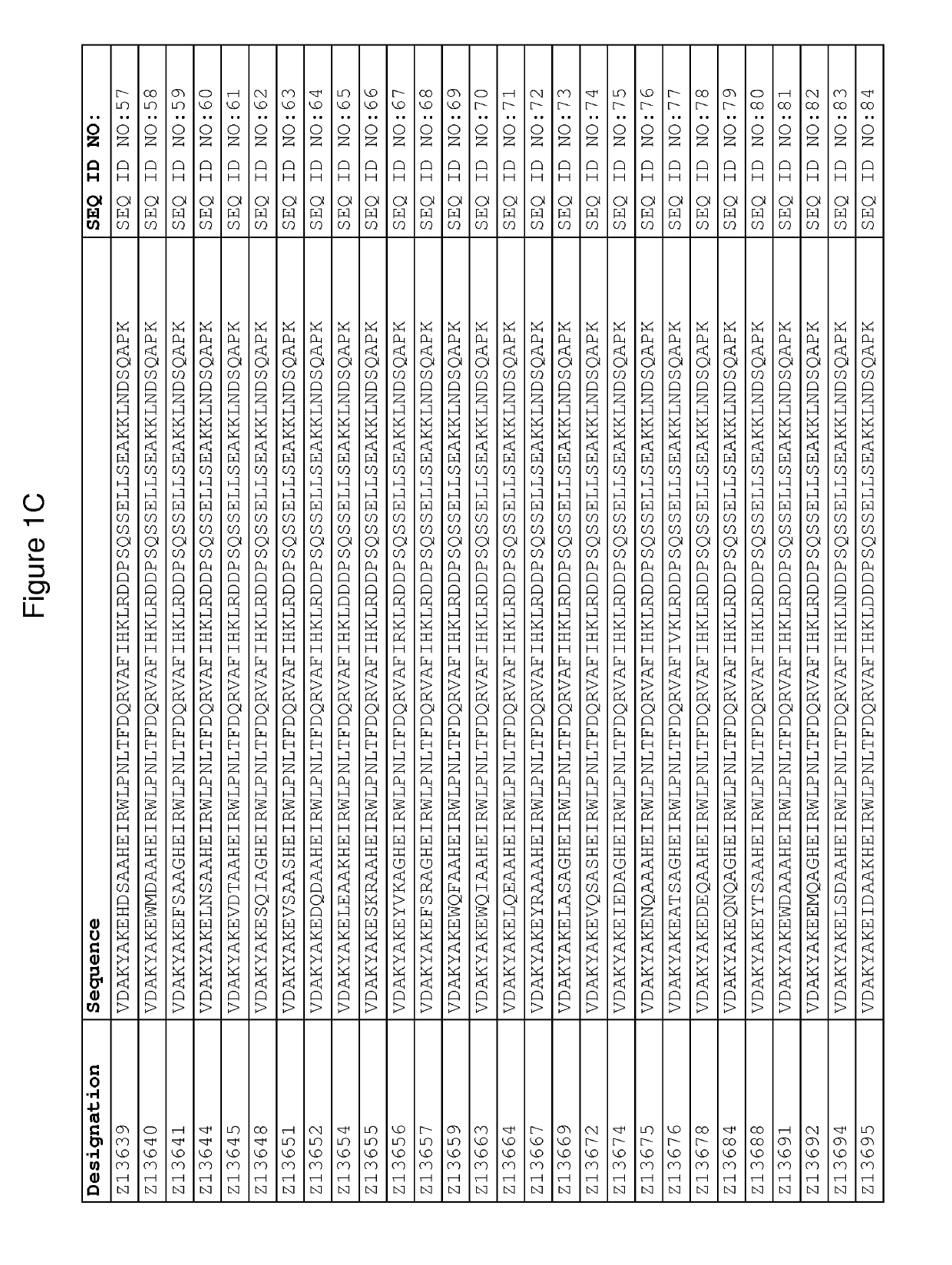Neonatal Fc receptor binding dimer and methods of use
a fc receptor and dimer technology, applied in the field of fc receptor binding dimer and methods of use, can solve the problems of reducing the specificity of the fusion partner, affecting tissue penetration, and limited use of therapeutic antibodies, so as to improve the binding properties of said fcrn binding polypeptides in dimeric form, and improve the binding properties of said fcrn binding polypeptides. the effect of greater improvemen
- Summary
- Abstract
- Description
- Claims
- Application Information
AI Technical Summary
Benefits of technology
Problems solved by technology
Method used
Image
Examples
example 1
Production of Human αFcRn and Human β2-Microglobulin (B2M)
[0373]In this Example, the extracellular domain (ECD) of human αFcRn (SEQ ID NO:379) in complex with human δ2-microglobulin (SEQ ID NO:380) (complex denoted FcRn) and human δ2-microglobulin in non-complexed form (denoted B2M) were produced as soluble proteins. Human FcRn and B2M produced in this Example were used for phage selection, ELISA and Biacore assays in Examples 2 and 3.
Materials and Methods
[0374]Construction of Plasmids Containing the Genes for Human αFcRn and Human β2-Microglobulin to be Used for Co-Expression:
[0375]The genes encoding human αFcRn (Genbank BC008734.2) and human δ2-microglobulin (B2M) (Genbank BC032589.1) were obtained from OpenBiosystems. Using PCR overlap extension, a gene fragment encoding amino acids 24-290 of human αFcRn (αFcRnECD) (SEQ ID NO:379) was amplified to a construct consisting of attB1-site / Kozak sequence followed by a gene encoding: an Ig kappa chain leader sequence, hFcRnECD, a GS-lin...
example 2
Selection and ELISA Binding of FcRn Binding Z Variants
[0392]In this Example, human FcRn was used as target in phage display selections using a phage library of Z variants. Selected clones were DNA sequenced, produced in E. coli periplasmic fractions and assayed against FcRn in ELISA (enzyme-linked immunosorbent assay).
Materials and Methods
[0393]Biotinylation of Target Protein FcRn and of B2M:
[0394]Human FcRn and human B2M, produced as described in Example 1, were biotinylated using No-Weigh EZ-Link Sulfo-NHS-LC-Biotin (Pierce, cat. no. 21327) at a 31× (FcRn) and 10× (B2M) molar excess, respectively, according to the manufacturer's recommendations. The reactions were performed at room temperature (RT) for 30 min. Subsequent buffer exchange to PBS was performed using Slide-a-lyzer dialysis cassettes (FcRn; Pierce, cat. no. 66380, 10,000 MWCO and B2M; Pierce, cat. no. 66333, 3,500 MWCO), according to the manufacturer's instructions.
[0395]Phage Display Selection of FcRn Binding Z Varian...
example 3
Production and Characterization of FcRn Binding Z Variants
[0415]In this Example, seventeen Z variants were produced in E. coli, purified and assayed against human FcRn in Biacore. A subset of said variants was also assayed against mouse FcRn. Circular dichroism (CD) spectroscopy was performed for a subset of Z variants for investigation of their secondary structure.
Materials and Methods
[0416]Subcloning of Z Variants:
[0417]The DNA of seventeen FcRn binding Z variants (SEQ ID NO:1-16 and SEQ ID NO:353) was amplified from the library vector pAY02592. A subcloning strategy for construction of monomeric Z variant molecules with N-terminal His6 tag was applied using standard molecular biology techniques (essentially as described in detail in WO2009 / 077175 for Z variants binding another target). The Z gene fragments were subcloned into the expression vector pAY01448 resulting in the encoded sequence MGSSHHHHHHLQ-[Z#####]-VD (SEQ ID NO:468.
[0418]In addition, the FcRn binding variant Z07918 ...
PUM
| Property | Measurement | Unit |
|---|---|---|
| binding affinity | aaaaa | aaaaa |
Abstract
Description
Claims
Application Information
 Login to View More
Login to View More - R&D
- Intellectual Property
- Life Sciences
- Materials
- Tech Scout
- Unparalleled Data Quality
- Higher Quality Content
- 60% Fewer Hallucinations
Browse by: Latest US Patents, China's latest patents, Technical Efficacy Thesaurus, Application Domain, Technology Topic, Popular Technical Reports.
© 2025 PatSnap. All rights reserved.Legal|Privacy policy|Modern Slavery Act Transparency Statement|Sitemap|About US| Contact US: help@patsnap.com



